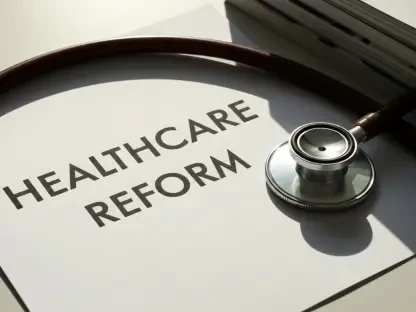In the realm of health policy, surprise billing for ambulance services has been a particularly thorny issue, leaving many patients struggling with unexpected expenses after emergency situations. Faisal Zain, a healthcare expert with a focus on medical technology, discusses the complexities and legislative efforts surrounding this critical concern. As surprise ambulance bills continue to burden patients financially, legislators attempt to navigate the challenging landscape of protecting consumers without inadvertently raising insurance premiums.
Could you share the story of Nicole Silva and her experience with surprise ambulance bills?
Nicole Silva faced a harrowing situation when her 4-year-old daughter was involved in a car accident near La Jara, Colorado. Despite being on Medicaid, which was supposed to cover the ambulance costs, Silva received a bill from one of the ambulance companies demanding $2,181.60. The situation worsened as the amount ballooned to over $3,000 because of court fees and interest, putting Silva in debt and compelling a debt collector to garnish her wages. This unexpected burden severely impacted her financial stability, affecting her ability to pay for essentials such as housing and utilities.
What actions are state legislators taking to address surprise billing for ground ambulance services?
State legislators are actively working to curb these surprise bills by passing laws that protect consumers. For instance, Utah and North Dakota have joined a number of other states in implementing measures to limit the financial impact on patients. These state laws are designed to bridge the gap left by federal legislation, mandating insurers to meet a predetermined minimum payout for ambulance services to reduce the financial burden on patients.
How does the No Surprises Act address air ambulances, and why does it exclude ground ambulances?
The No Surprises Act addresses air ambulances by ensuring patients are billed as if the service was in-network, protecting them from unforeseen out-of-pocket costs. However, ground ambulances are not covered due to the diverse nature of their business models and a lack of comprehensive data on their costs. This exclusion leaves room for states to tackle the issue individually, albeit with challenges.
Why do patients often get surprise bills from ambulance companies?
Patients receive these surprise bills because ambulance companies and insurance providers don’t always have mutual agreements, leading to potentially exorbitant out-of-network charges. Emergency circumstances mean patients have no choice in the service provider responding to their needs, leaving them vulnerable to unexpected billing when their chosen or available services are not covered under their insurance network.
How are some states trying to fill the gap left by the federal No Surprises Act regarding ground ambulance services?
States have introduced legislation to establish minimum reimbursement levels that insurers must adhere to in case of ambulance services. This approach seeks to balance the interests of insurers and service providers while ensuring patients are less likely to receive unexpected and unaffordable bills after receiving critical care.
What are some of the challenges lawmakers face when setting a minimum payout for insurers in the context of ambulance bills?
Setting a minimum payout involves balancing protections for consumers with the potential for increased insurance premiums. Lawmakers must consider how mandatory payouts to ambulance services might impact overall healthcare costs, and therefore, insurance premiums for the broader population. Finding an equilibrium that safeguards patients without escalating insurance costs has proven difficult.
Why did Colorado’s attempt to expand protections from surprise ambulance bills face obstacles, despite unanimous legislative support?
Despite the legislation gaining unanimous legislative support, it faced challenges when Colorado’s Governor, Jared Polis, vetoed the measure due to concerns over possible increases in health insurance premiums. This highlights the tension between consumer protection and economic implications for insured individuals.
Can you explain Governor Jared Polis’s reasoning for vetoing the Colorado measure on ambulance bills?
Governor Polis expressed concern that the measure would lead to incremental premium hikes for members, ranging between 73 cents and $2.15 monthly. While acknowledging the necessity of addressing surprise billing, he opined that the potential cost savings did not justify the premium increases that could occur, thus vetoing the legislation.
What are the limitations of state laws in addressing surprise ambulance bills due to their applicability only to state-regulated health plans?
State regulations apply only to health plans under state jurisdiction, excluding those managed at the federal level or self-funded employer plans. As a result, a significant portion of working individuals isn’t covered by state protections, creating a disparity in consumer protection and highlighting the need for comprehensive federal legislation.
How did insurance companies, like Anthem and UnitedHealth Group, respond to Colorado’s legislation on ambulance billing?
These insurance companies opposed the bill, indicating it would result in higher premiums, according to lobbying groups. They voiced their concerns that mandating specific reimbursement levels would set a precedent that challenges their ability to negotiate rates, which could destabilize existing insurance models.
What was the Colorado Association of Health Plans’ concern about local governments setting their own rates for ambulance services?
The concern centers on local governments setting disparate and potentially inflated rates, which could lead to inconsistencies and higher costs. They argued it would resemble “the fox managing the henhouse,” complicating the regulation of reasonable service rates and making statewide regulatory enforcement more challenging.
How are other states like Washington evaluating the impact of their surprise ambulance billing laws, and what can we learn from them?
Washington is conducting impact analyses to assess how their legislation affects premiums and consumer protection. While it’s too early for conclusive results, ongoing evaluation is vital for understanding the balance between effective legislative protection and the economic ramifications for consumers and insurers.
Why did Montana’s proposal for minimum reimbursement for ground ambulances face opposition from health insurers?
Montana proposed a reimbursement rate significantly higher than Medicare’s standard, posing potential cost increases for insurers. Health insurers opposed this, arguing it was excessive and would unfairly burden those bearing insurance costs, emphasizing competition and market-driven pricing over government mandates.
How do health insurers argue against government-mandated pricing for ambulance services, and what are their main concerns?
Insurers contend that government-set rates undermine negotiation autonomy and inflate service costs. They argue that this leads to unrealistic pricing frameworks that can make health insurance more expensive for all consumers, diverting away from market-based solutions and introducing inefficiencies.
In the discussion about ambulance billing and health premiums, what are some of the trade-offs between potential premium increases and avoiding large surprise bills?
The primary trade-off lies in either accepting slightly higher premiums to avoid severe financial strain from unexpected ambulance bills or maintaining current premiums with the risk of facing large out-of-pocket expenses. It involves weighing the financial predictability of monthly insurance costs against the unpredictability and potential severity of unexpected medical expenses.
Why do some policymakers believe that the benefits of avoiding surprise ambulance bills might outweigh the potential increase in health premiums?
They argue that the relatively small increase in premiums is a worthwhile trade-off for shielding consumers from significant debt resulting from unexpected, unaffordable bills. This perspective considers consumer financial stability and access to care paramount, even if it requires broader contributions through premiums.









